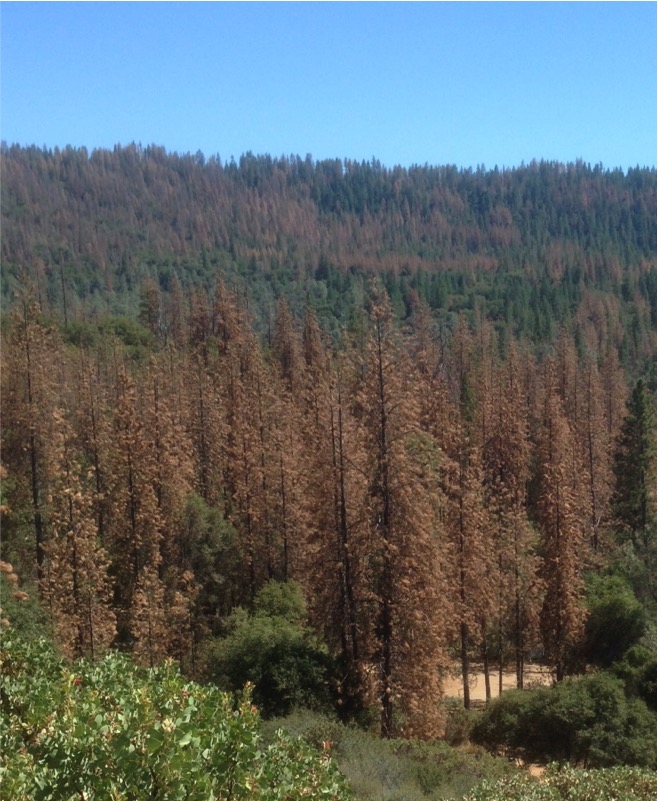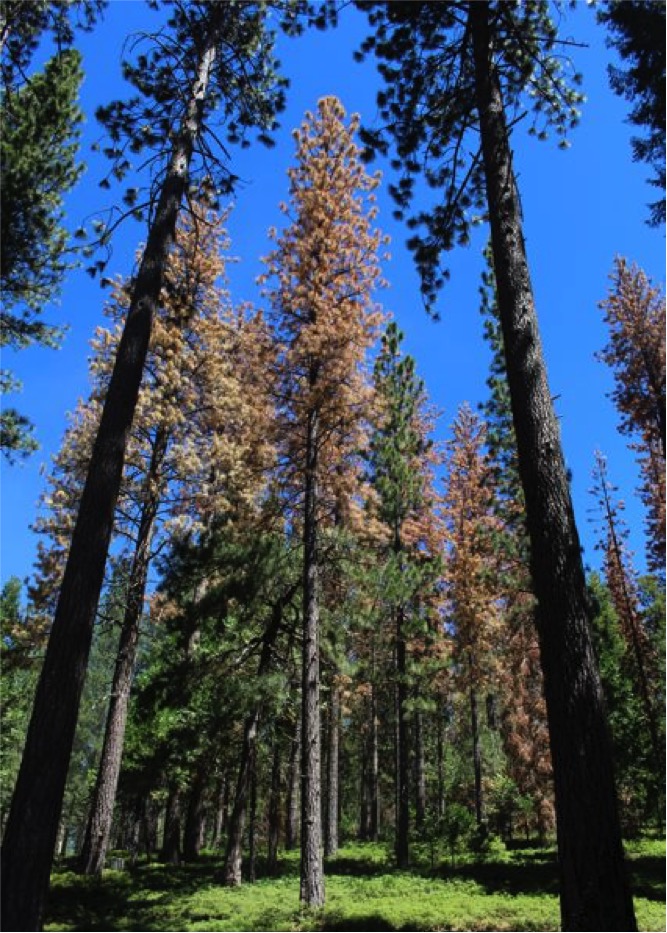
Instead of dense forest stands with 200 or 300 trees per acre or more (as can often be found in the region’s forests today), historic sample plots often contained only 20 to 100 conifers per acre growing as scattered individual trees amidst many openings and various sized forest patches. Large, old growth trees were abundant – having survived centuries of fires, storms, dry periods, and insect infestations.
Even then, bark beetles were a natural part of the forest ecosystem. Only during droughts will beetle numbers soar to the point that they begin to overwhelm the defenses of healthy trees. Last year’s extreme drought conditions stressed so many conifers that the beetles were easily able to bore through the bark and lay eggs in the cambium layer without being repelled by sap flow. During previous droughts, bark beetle attacks have killed large numbers of trees, but the current wave of beetle-caused tree mortality goes beyond anything previously described.
Given the on-going expansion of fading trees, it is likely that high numbers of additional trees will die this year beyond what is already so visible. In the southern area of the Stanislaus Forest, some members of USFS staff refer to “the red tsunami” as the die-off sweeps across broad swaths of conifer forest (above). That mortality results in high levels of tinder-dry fuel, which increases the potential for new Rim Fire-type mega-fires. As we enter the height of fire season, widespread bone-dry fuels add to the risk.
Ideally, in a few years the crisis will be past, and there will still be enough surviving trees to provide vital forest habitat. But the current grim situation may expand significantly so that many areas will lose most of their conifers (or at least their pines) – severely affecting conifer-dependent wildlife and the rest of the forest ecosystem.


